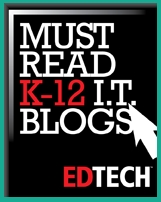
Internet Access
The arguable grandfather of technology in the classroom, Internet access has become relatively commonplace for elementary, middle schools and high schools across the country. From communicating with students and fellow teachers via email, to accessing limitless research online, the Internet can truly expand your student's thinking.
If you've never used the Internet to supplement your lessons, a good place to start can be a research paper assignment. Don't assume that your students will intuitively know how to use the Internet appropriately; thinking of all young people as "digital natives" can backfire in the classroom and lead to missed opportunities for learning and teaching. Build a unit that includes clear information on how to identify bias, cite sources appropriately, and determine what information is credible versus what is simply bogus. These lessons will provide a stronger foundation of technical savvy that students will hopefully continue to build into their college years.
Another great way to use the Internet in your lessons is to tap into the dizzying inventory of online videos. Informational videos can help build background knowledge and expose students to content-specific vocabulary, which will support their reading comprehension and vocabulary acquisition. If you're ready to go for the tech gold, you might even consider having a "flipped classroom" for a day, a unit or even the whole year. With this model, students watch videos to learn a great deal of content on their time, at home or at the library. In class, they use the face-to-face time to receive support from their teacher, and collaborate with peers to think more deeply about the content.
Scanners
It's easy to forget about the many uses of the humble scanner. While scanners lack the bells and whistles of some more modern technology, they can be extraordinarily useful in bringing both historical documents and student work to life. When used in combination with an overhead projector or smartboard, teachers can teach students how to become better visual readers with a keen eye for detail.
Printers
Many schools, businesses and workplaces are going paperless to reduce waste and save resources. While the green approach is certainly admirable, judicious use of your classroom printer can be a great way to encourage students to publish and share their written work. Printing final research papers, creative works or even turning your printer into a press for a classroom magazine can build community and empower students to do their very best work.
Interactive Whiteboards
Without proper training, it's easy to get overwhelmed by the presence of a high-tech whiteboard in your classroom, but these devices can make for some memorable teaching moments. In a national survey conducted by PBS, a whopping 93 percent of educators surveyed reported that they believed interactive whiteboards helped to enrich their classroom. If you have a board installed in your classroom, talk to your principal or instructional leader about getting the training you need to use your board appropriately. Now that these boards have become something of a fixture in many classrooms, you can also find a number of free, teacher-made resources online. Taking the time to figure out a new tool can definitely pay off with greater student engagement and greater gains.
As we move further into the 21st century, it's clear that technology is an ever-evolving part of education, and one that's here to stay. By brushing up on the basics, you can offer a more interactive experience for your students, and become more knowledgeable and excited for your own path as a plugged-in educator, capable of bringing the world to your classroom door.
About the Author:
Steve Widmer, ECM Specialist, The Gordon Flesch Company
With nearly 30 years of experience as both a provider and a client, Steve brings to the table a unique appreciation for what it’s like to be on both sides of the desk. Whether it’s providing solutions that can benefit an entire enterprise or scaling down a solution for an individual department, through it all, Steve remains driven and inspired by any opportunity he’s given to positively influence the growth of an organization.












